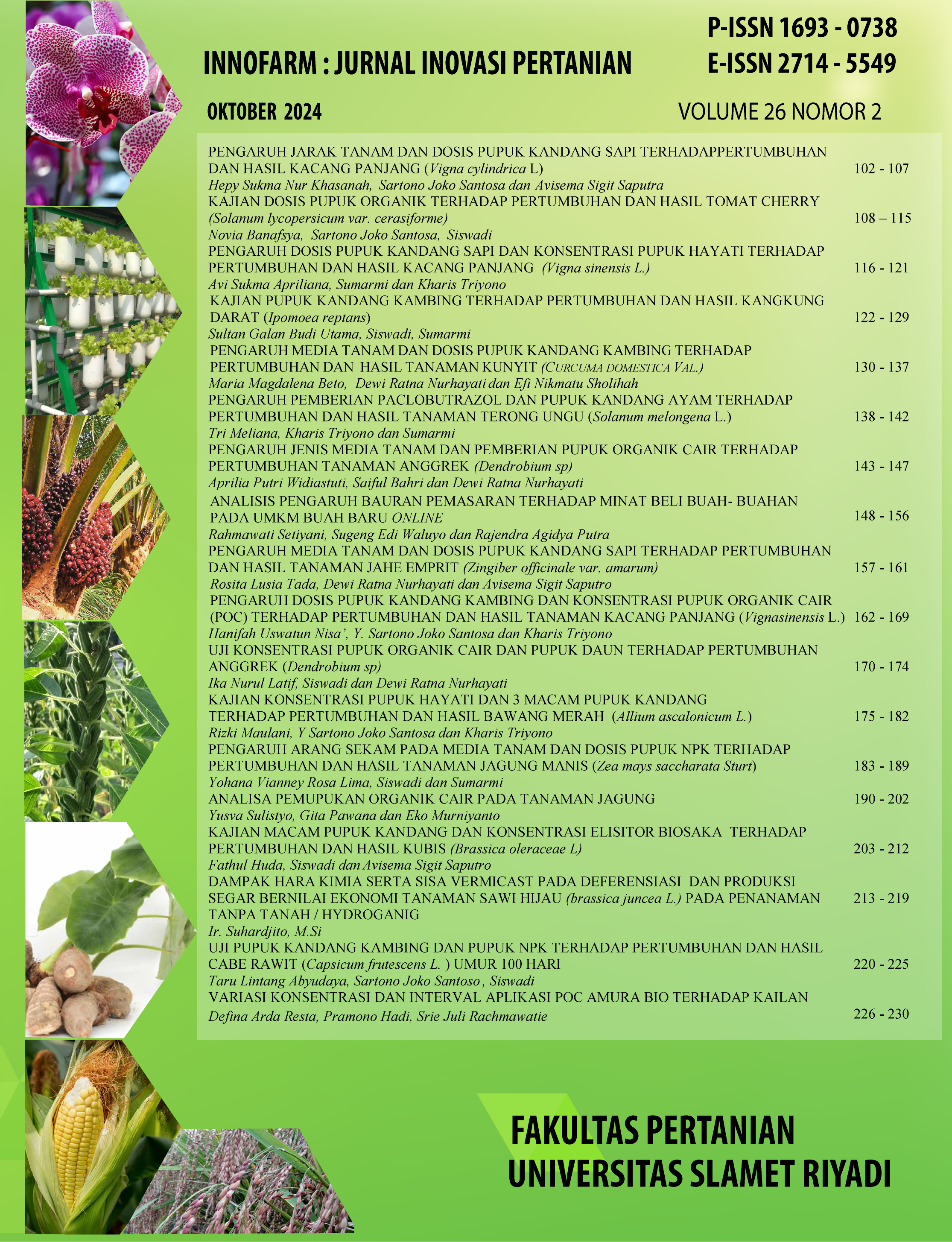Analysis of Liquid Organic Fertilization on Corn Plants
author guidelines; agriculture journal; article template
DOI:
https://doi.org/10.33061/innofarm.v26i2.10973Abstract
Inorganic fertilizer is believed to have a positive influence on the growth and production of corn plants, however, the scarcity of inorganic fertilizer and its impact on land resources needs to be reduced. Organic fertilizer is an alternative because its effect is positive but lasts for a long time. There are quite a lot of raw materials for organic fertilizer in Indonesia, including organic waste, grass, bushes and parts of vegetation that have not been utilized. Bamboo waste is one of the materials that can be used for liquid organic fertilizer (POC). The aim of this research is to analyze liquid organic fertilizer on soil acidity, nitrogen content, bacterial abundance, impact on chlorophyll and corn production. The method used in this research is an implementation study, treatment from 0 to 5 l/ha on 1 (one) hectare of land. Data analysis uses simple and descriptive regression equations. The research results showed that POC treatment could increase pH, N-total, bacterial abundance, leaf green color and seed weight of each plant compared to without POC treatment. POC treatment of 3 l/ha tends to result in an optimum increase in pH, total N and seed weight for each plant, while bacterial abundance is fluctuating
Downloads
Published
Issue
Section
License
Copyright (c) 2024 Eko Murniyanto, Yusva Sulistyo, Gita Pawana

This work is licensed under a Creative Commons Attribution-NonCommercial 4.0 International License.
Authors who publish this journal agree to the following terms:
- Authors retain copyright and grant the journal right of first publication with the work simultaneously licensed under a Creative Commons Attribution License that allows others to share the work with an acknowledgement of the work's authorship and initial publication in this journal.
- Authors can separately make additional contractual arrangements for non-exclusive distribution published by the journal (e.g., publish it in a book), with an acknowledgement of its initial publication in this journal.
- Authors are allowed and encouraged to send their work via online (e.g., in the institutional repositories or their website) after published by the journal.















